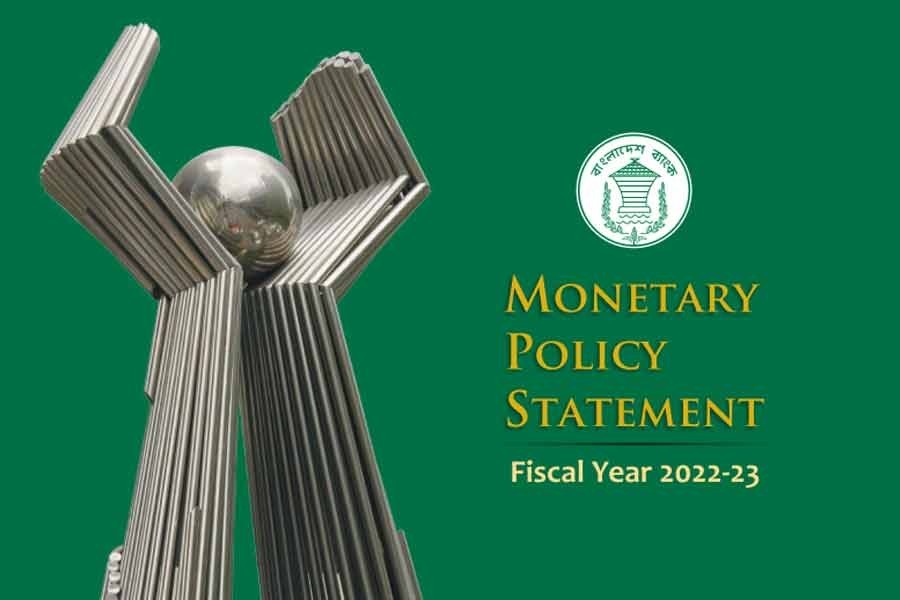
Is the revised MPS enough for the purpose?
Monday, 16 January 2023

The revised monetary policy statement (MPS) announced by the central bank on Sunday last for the second half of the current financial year (FY) 2022-23, according to its own statement, is 'cautiously accommodative'. If it is not entirely conservative, the new MPS more or less follows a 'cautious' policy stance with a 'tightening bias' seen in its original one-year monetary policy. In the latest MPS, there is a clear attempt to strike a balance between money circulation and economic growth in a globally economic crunch time. But it is still likely to fall short of meeting the need for improving the country's balance of payments (BOP). Notwithstanding the increase in policy interest rates by 25 basis points and withdrawal of cap on deposit, the banking sector will remain hamstrung by the contradictory lending-rate cap for business loans. In the absence of flexible interest rates and a unified currency exchange-rate regime, any manoeuvrability other than tight-rope walking in matters of economic management remains a distant dream.
Although the removal of cap on deposit sounds good, attracting depositors will not be easy unless the inflation can be tamed well below the interest rate. The relaxation of lending-rate cap on consumer credits by up to 3.0 percentage point (to 12 per cent) is a step in the right direction. In fact, the central bank should have also withdrawn the lending rate cap in other areas. Upward revision of public-sector credit by 1.0 percentage point to 37.7 per cent is also not going to leave a positive contribution unless a reasonable share of the fund is invested in the productive sector. Credit to business and investment in the private sector remains unchanged at 14.1 as before. But mobilising funds under the prevailing circumstances might prove a daunting task. Then again, the manufacturing sector and businesses already constrained by dollar crunch will find themselves still more handicapped in opening letters of credit (LCs) for import of capital machinery and raw materials ---all of which are indispensable for boosting industrial production and doing business.
Although the Bangladesh Bank claims the increase in policy interest rates and repo rate will help maintain monetary flow as well as growth momentum with its sobering influence on BOP, it is not at all feasible for an economy that has to depend on energy from outside sources. Abnormally higher energy prices following the Russo-Ukraine war has rudely exposed the country's vulnerability. Adverse currency exchange rates and high fossil fuel prices have only made the matter worse for countries like Bangladesh running short of energy. Since export income and remittance have not gone up to meet the gap between import and export earnings, the country's forex reserve has been under severe stress.
Against such a backdrop, the central bank's MPS alone cannot be enough to tackle the problem of inflation, which is now much higher than the projected one, unless the fiscal policy is made complementary to it or the other way around. Like the recent hike in power tariff, rise in prices of other utilities and services will be compulsive, forcing industrial production, imported commodities and living costs even dearer. The looming fear of further spread of Covid-19 in China may have upset not only many of the financial calculations in this country but also all across the world. Until or unless the country can shift to renewable energy or extract its fossil fuels to a sizeable amount for its power need, the country's economic growth will be tied to external factors in a large measure.